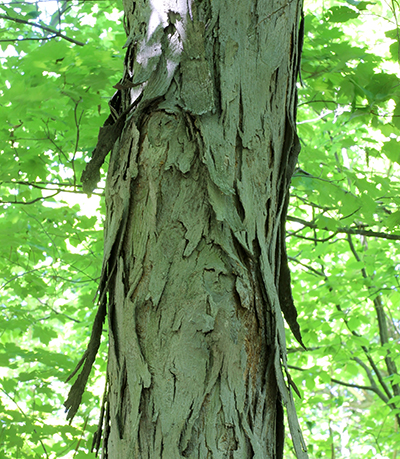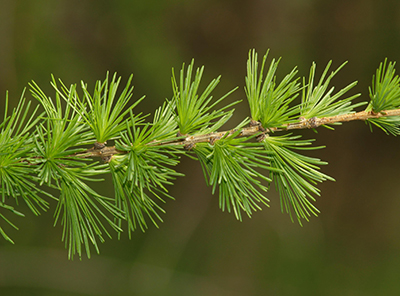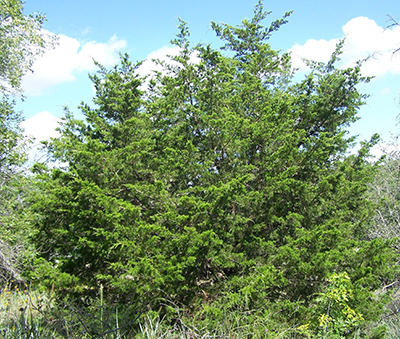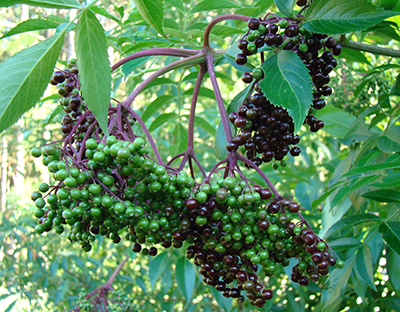Choosing native trees and shrubs for your Michigan landscape
Native trees and shrubs are low maintenance and a great addition to the landscape.

As people work to install landscaping around their homes, many questions arise. How do I choose trees and shrubs that have the best chance of survival? Which trees will withstand the extreme weather conditions we have experienced like droughts, below zero temperatures and heat waves? How can I make the best decisions when I purchase? There is more to having success with woody landscape plants than just choosing something that you like. All trees and shrubs require some care, especially after planting and during a drought. No plants, other than weeds, can be considered a “just plant it and forget it” kind of purchase.
Before purchasing a tree or shrub, assess the location where it will be planted. Factors to investigate include the amount of full, uninterrupted sun the area receives; whether the soil is sand, loam or clay; and how well the soil drains. Having standing water or saturated soil even for short periods of time may change plant selections. Do some research to find out if what you want to plant will grow in this location. Look at native trees that are growing successfully near where you will be planting. If you have questions about your soil, Michigan State University Extension provides an easy-to-use soil test kit that can be purchased online from the MSU Extension Bookstore or from your local county MSU Extension office.
Consider the “10% rule” when selecting trees and shrubs. Put in no more than 10% of any one kind of tree or shrub into your landscape. This is like insurance against insect pests, diseases or other problems that could come along. Only a small part of your landscape would be damaged when an unforeseen problem arises, and diversity makes for a more interesting landscape. Using native trees and shrubs can help establish a sense of place and can be low maintenance.
Native trees and shrubs have an advantage when it comes to climate and growing conditions. They have been growing in this location for thousands of years and in most cases can survive problems with native insects and diseases. Not all native plants are resistant to disease or pest problems, especially if they are grown in the wrong location or do not receive adequate moisture. Also, not all pests or diseases are native. This can be seen with Dutch elm disease, oak wilt and emerald ash borer in recent history.
Native trees and shrubs also can create backyard habitat for birds, pollinators and other wildlife. Those that produce berries or nuts provide a source of food and offer shelter. Trees and shrubs that are grouped in an area also provide winter habitat, especially for birds. Listed below are a few trees and shrubs with some information about these natives.
Deciduous trees (lose leaves each fall)
Maples (Acer spp.): red maple (Acer rubrum) and sugar maple (Acer saccharum). Avoid silver maples and boxelders because of weak wood. Non-native Norway maples and Japanese maples can cause or experience problems.
Oaks (Quercus spp.). Red oak, bur oak and swamp white oak will grow in poorly drained areas. Oaks are slow growing, large trees. Pin oaks require acidic soil.
Hornbeam or blue beech (Carpinus caroliniana). Small trees with attractive bark, can handle moist areas and shade-tolerant.
Kentucky coffeetree (Gymnocladus dioicus). Medium to large tree, not shade-tolerant, relatively fast growing and has an attractive foliage.
Hophornbeam (Ostrya virginiana). Small to medium in size, slow growing, very hard wood, shade-tolerant and has interesting fruit that look like hops.
Basswood (Tilia americana). Large tree with somewhat heart-shaped leaves, shade-tolerant and moderately slow growing. Its small, yellow-white fragrant flowers attract bees.
Blackgum or Tupelo (Nyssa sylvatica). Grows in the southern half of Lower Michigan, is slow-growing and has lustrous leaves with bright red autumn foliage.
Hickory (Carya spp.). Shagbark and shellbark produce edible nuts and both have textured bark, especially shagbark. Bitternut and pignut hickories produce nuts for wildlife; they are not tasty to people.

Textured bark of shagbark hickory. Photo credit: Rob Routledge, Sault College, Bugwood.org
Hackberry (Celtis occidentalis). Medium sized tree, fast growing and moderately long-lived. The tiny edible fruit are eaten by birds.
Tamarack (Larix laricina). This deciduous conifer appreciates moist soils and can grow in wetland areas. Needles turn brilliant yellow in the fall and drop. In the spring, new needles grow. Needles are light and feathery.

Tamarack needles. Photo credit: Becca MacDonald, Sault College, Bugwood.org
Evergreen trees (needles remain all year, but have a life expectancy)
Eastern red cedar (Juniperus virginiana). Small to medium sized tree, roots deeply and is wind- and drought-resistant. Foliage turns bronze in winter. Birds feed on small, blueish berries.

Eastern redcedar trees in the landscape. Photo credit: Karan A. Rawlins, University of Georgia, Bugwood.org
Eastern white pine (Pinus strobis). State tree of Michigan with long, soft needles in groups of fives. Moderately fast growing, large tree, vigorous as an ornamental tree and requires well-drained soils.
Black spruce (Picea mariana). Small to medium tree, grows well in acidic, moist soils and is very slow growing.
Deciduous shrubs (lose leaves each fall)
Shrub dogwoods (Cornus spp.). Examples like silky, red-osier, gray and yellow twig do well on moist soils. Many have brightly colored stems and are small in size.
Ninebark (Physocarpus opulifolius). White to pinkish flowers around June, heavily branched and not shade-tolerant. Erect spreading shrub forms a dense crown.
Spicebush (Lindera benzoin). Large aromatic shrub native to the southern half of the Lower Peninsula that grows best when moderately shaded. Has early, dense clusters of yellow flowers.
Common elderberry (Sambucus canadensis). Grows in moist soils and produces purplish-black drupes that are excellent wildlife food.

Common elderberry fruit. Photo credit: Rebekah D. Wallace, University of Georgia, Bugwood.org
Highbush cranberry (Viburnum trilobum). Produces white flowers in June and acidic berries for wildlife.
This is just a brief look at a few native trees and shrubs. Use the botanical names to conduct an Internet search to find out more on those you would like to invite home.



 Print
Print Email
Email

